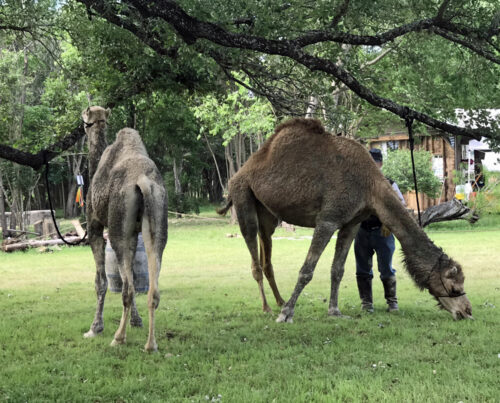
The pride of the US Army Camel Corps (21st Century Reenactor Division) At the New Braunfels Folkfest, this last weekend, on the grounds of the Heritage Village.
Some Chicago Boyz know each other from student days at the University of Chicago. Others are Chicago boys in spirit. The blog name is also intended as a good-humored gesture of admiration for distinguished Chicago School economists and fellow travelers.

The pride of the US Army Camel Corps (21st Century Reenactor Division) At the New Braunfels Folkfest, this last weekend, on the grounds of the Heritage Village.
Comments are closed.
The old joke is that a camel is a horse a committee designed. In Australia I was surprised to learn that in addition to wild horses, called Brumbies, there are wild camels roaming the outback, the remnants of an experiment in the 1800s for travel to the most desolate regions.
Well, with all that desert … it was a logical assumption that a desert-adapted critter like a camel would be good transportation. Alas, the average camel turned out to be too ornery and bad-tempered for American and Australian muleteers to handle…
In reality there was no Camel Corps. The US Army camels, while owned by the Army were managed by civilian contractors, just like the rest of the baggage train was in the middle of the 19th century (including during the American Civil War). It was an imaginative way to move supplies through the Southwestern desert.
20th Century misremembering and some braggadocio by one of the civilian managers of the camels transformed the reality of the Army camels to the 20th century image of being some type of mounted infantry.
Fact of the day: One of the stranger points found out during the ‘camel tests’ by the US Army was the arabian dromedary camel can survive on creosote bushes.